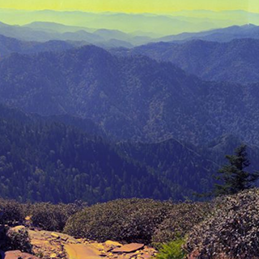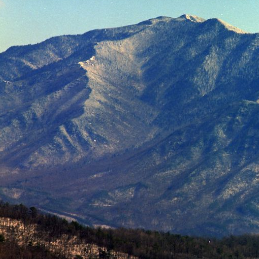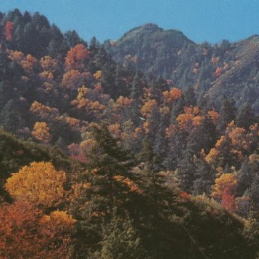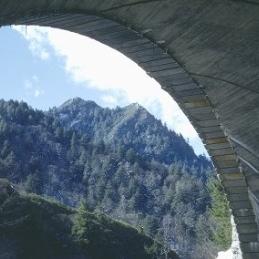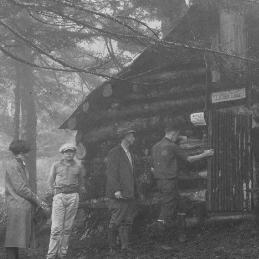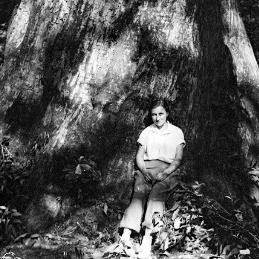Browse
"Associations Between Causal Agents of the Beech Bark Disease Complex [Cryptococcus fagisuga (Homoptera: Cryptococcidae) and Nectria spp.] in the Great Smoky Mountains National Park." Environmental Entomology 33, no. 5 (2004): 1274-1281.
"Exploring Interactions Between Pollutant Emissions and Climatic Variability in Growth of Red Spruce in the Great Smoky Mountains National Park." Water Air and Soil Pollution 159, no. 1 (2004): 225-248.
"Pyrenomycetes of the Great Smoky Mountains National Park. I. Diatrype fr. (Diatrypaceae)." Fungal Diversity 17 (2004): 191-201.
"Stand Restoration Burning in Oak–pine Forests in the Southern Appalachians: Effects on Aboveground Biomass and Carbon and Nitrogen Cycling." Forest Ecology and Management 190, no. 2-3 (2004): 311-231.
Barns. New York : Library of Congress: WW Norton, 2003.
"Predicting Rare Plant Occurrence in Great Smoky Mountains National Park, USA." Natural Areas Journal 23, no. 3 (2003): 229-237.
The Southern Highlander & His Homeland. University Press of Kentucky, 2003.
"Survival of Nuisance American Black Bears Released On-Site in Great Smoky Mountains National Park." Ursus 14, no. 2 (2003): 210-214.
Tennessee In Rookie Read-About Geography. Children's Press, 2003.
"Correlates of Success for On-Site Releases of Nuisance Black Bears in Great Smoky Mountains National Park." Wildlife Society Bulletin 30, no. 1 (2002): 104-111.
"A Model to Predict the Occurence of Surviving Butternut Trees in the Southern Appalachian Region." In Prediciting Species Occurrences Issues of Accuracy and Scale, edited by Michael J. Scott, Patricia J. Heglund, Michael L. Morrison, Jonathan B. Haufler, Martin G. Raphael, William A. Wall and Fred B. Samson, 491-497. Washington, D.C.: Island Press, 2002.
"Variation in Overstory Nitrogen Uptake in a Small, High-Elevation Southern Appalachian Spruce-Fir Watershed." Canadian Journal of Forest Research 32, no. 10 (2002): 1741-1752.
"Denitrification Potential in Sediments of Headwater Streams in the Southern Appalachian Mountains, USA." Journal of the North American Benthological Society 20, no. 4 (2001): 505-519.
Mountain Hands : A Portrait of Southern Appalachia. Knoxville, TN: University of Tennessee Press, 2001.
"Is There Synchronicity in Nitrogen Input and Output Fluxes at the Noland Divide Watershed, a Small N-Saturated Forested Catchment in the Great Smoky Mountains National Park." The Scientific World Journal 1 (2001): 480-492.
"Modeling the Distributions of Species and Communities in Great Smoky Mountains National Park." Computers and Electronics in Agriculture 27, no. 1 (2000): 389-392.
"Historic PM2.5/PM10 Concentrations in the Southeastern United States - Potential Implications of the Revised Particulate Matter Standard." Journal of the Air & Waste Management Association 49, no. 9 (1999): 1060-1067.
Correlates of Red Wolf Repatriation Success in the Southeastern United States In Final Report. Knoxville, Tennessee: U.S. Fish and Wildlife Service, 1998.
"A GIS Model to Predict Black Bear Habitat Use." Journal of Forestry 95, no. 8 (1997): 6-12.
"Procedures to Enhance the Success of a Black Bear Reintroduction Program." Bears: Their Biology and Management 9 (1997): 66-77.
"Benefits and Pitfalls of Long-Term Research: A Case Study of Black Bears in Great Smoky." Wildlife Society Bulletin 24, no. 3 (1996): 443-450.
"Acidic Deposition, Ecosystem Processes, and Nitrogen Saturation in a High Elevation Southern Appalachian Watershed." Water Air and Soil Pollution 85, no. 3 (1995): 1647-1652.
Arrowmont photography student sorts slides.. The University of Tennessee Libraries Digital Collections: From Pi Beta Phi to Arrowmont, 1995.
Incidence and Life History of Beech Scale, Initiator of Beech Bark Disease, in the Great Smoky Mountains National Park. Knoxville, TN: University of Tennessee, 1995.













